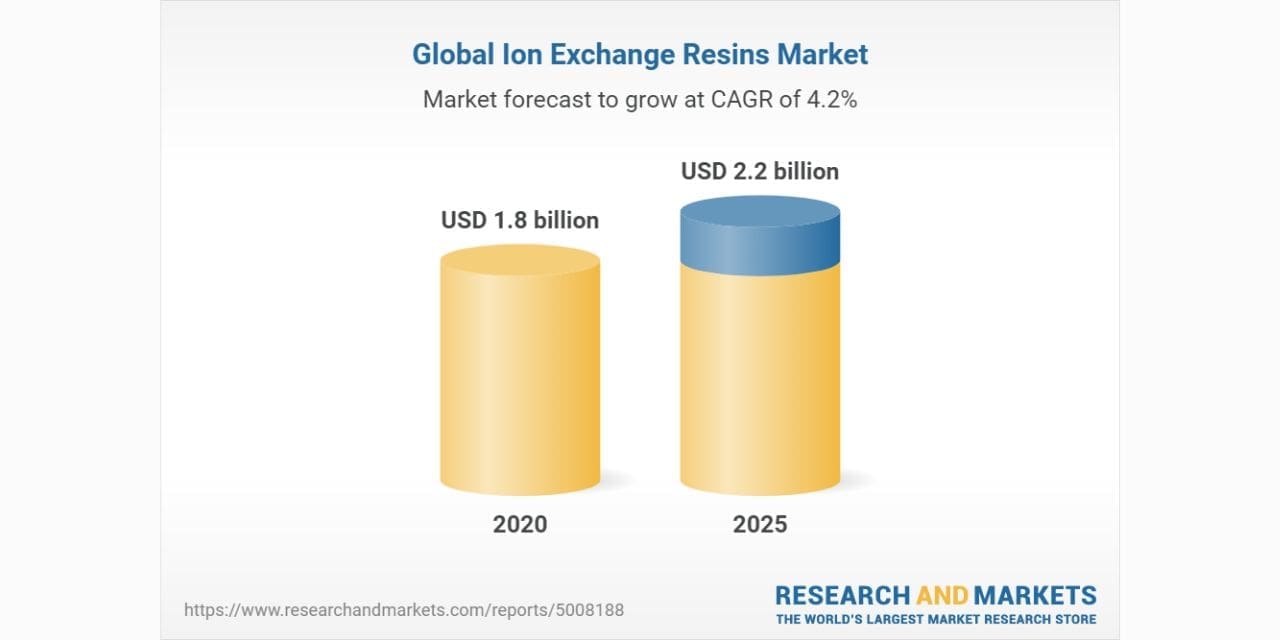The report “Ion Exchange Resins Market by Type (Cationic Resins, Anionic Resins), Application (Water, Non-Water), End-Use Industry (Power, Chemical & Petrochemical, Pharmaceutical, Food & Beverage), and Region – Global Forecast to 2025″, is projected to grow from USD 1.8 billion in 2020 to USD 2.2 billion by 2025, at a CAGR of 4.2%, during the forecast period. Ion exchange resins are small plastic beads that have a porous structure and have the ability to absorb water. Ion exchange resins find use in various end-use industries, such as power generation, chemical & petrochemicals, food & beverage, pharmaceuticals, electrical & electronics, and metal & mining. They are also extensively used for water & wastewater treatment to soften the hard water and also for the demineralization of water.
Browse
• 158 Market data Tables
• 52 Figures
• 182 Pages and in-depth TOC on “Ion Exchange Resins Market – Global Forecast to 2025”
Some of the prominent key players are:
· DuPont de Nemours, Inc., (US)
· Lanxess (Germany)
· Purolite Corporation (US)
· Mitsubishi Chemical Corporation (Japan)
· Thermax Limited (India)
· Ion Exchange (India) Ltd. (India)
· Novasep Holding (France)
· Samyang Corporation (South Korea)
· ResinTech Inc., (US)
· Bio-Rad Laboratories, Inc. (US)
The cationic resins segment is expected to account for the largest share of the ion exchange resins market, by type, during the forecast period.
Cationic resins is projected to be the largest segment of the market. Cationic resins can be further divided into strong acid cation and weak acid cation. These resins are majorly used for water softening to remove hardness causing ions, softening and dealkalization, and barium & radium removal. Cationic resins have been used for commercial, industrial, and residential purposes and have gained popularity over time. Various companies are investing significant amounts of their revenues in R&D activities to find new applications of these resins, thereby, boosting their business growth rate, significantly.
The water segment is expected to account for the larger share of the ion exchange resins market, by application, during the forecast period.
Water is projected to be the faster-growing application segment. This large share of water application can be attributed to the increased use of ion exchange resins in water & wastewater treatment. The norms followed by some countries including China are increasingly resembling that of the countries in North America and Europe. As the regulations get more stringent, the demand for ion exchange resins in water applications is expected to increase further during the forecast period.
The ion exchange resins market in APAC is expected to register the highest CAGR during the forecast period.
APAC is segmented into China, India, Japan, South Korea, Australia, Taiwan, Thailand, Indonesia, and Rest of APAC. The growth of the ion exchange resins market in the region is primarily due to its high demand from power, chemical & petrochemical, food & beverage, and electrical & electronics industries. The world is witnessing a scarcity of fresh water for both industrial as well as domestic purposes, and the need for re-use and recycling of water is expected to propel the ion exchange resins market growth. Furthermore, increasing urbanization augmented by rising disposable income of the population is contributing to the increasing demand for potable water. In addition, the growing industrialization is also propelling the demand for ion exchange resins in various applications, such as ultra-pure water and drug delivery.

